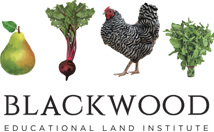
by Blackwood Land | Aug 31, 2016
When we think of tilling fields, we think of tractors churning up the soil, but that isn’t always the case. Conservational tillage practices offer environmentally and sustainably friendly solutions to tilling fields and preparing them for new crops. The traditional...
by Blackwood Land | Aug 28, 2016
We’re very familiar with commercial farming, where farmers grow their crops to sell and make a profit. Substinence farming, in contrast, is when a farmer grows only what his or her family needs to survive. Substinence farming, most common in under developed countries,...
by Blackwood Land | Aug 25, 2016
Traditionally, farms are used to harvest produce and livestock, but there’s been a growing movement towards harvesting something new: renewable energy. Many farmers already use their land to produce renewable energy by growing corn to make ethanol, and many others...

by Blackwood Land | Aug 22, 2016
Ask any resource for a definition of “sustainable agriculture” and a focus on enhancing the quality of life for farmers, their workers, and their communities will always come up. Quality of life, as a broad concept, can mean many things. For farmers, it means...

by Blackwood Land | Aug 19, 2016
Permanent + agriculture = permaculture. Permaculture began as a collaboration between Bill Mollison and David Holmgren in Tasmania in the 1970s. Mollison, a forester, was impressed with the stability and productivity of mature forests. He believed that if humans...




